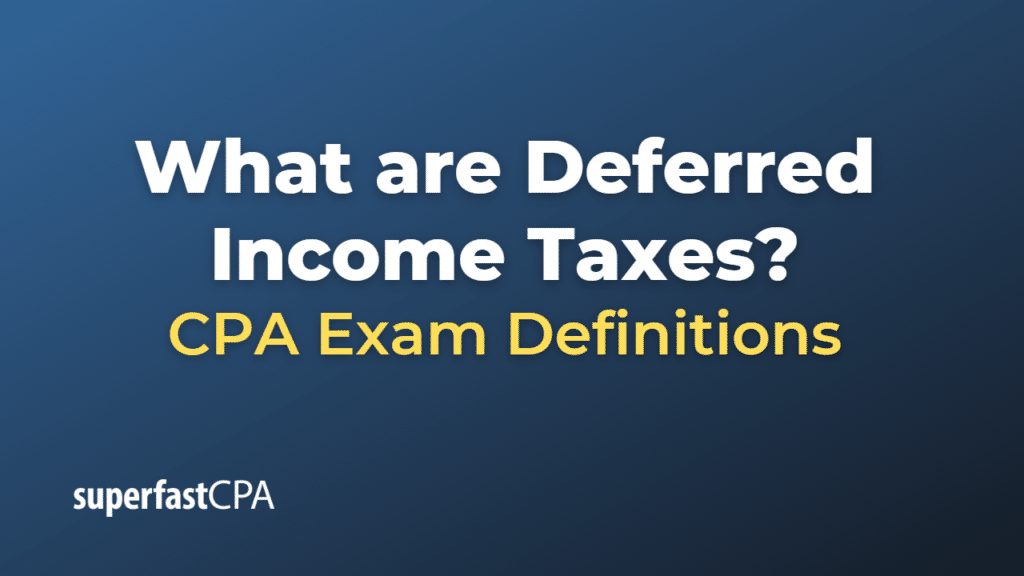Deferred Income Taxes
Deferred income taxes are future tax liabilities or assets that arise due to temporary differences between the financial reporting of income and expenses, and their tax reporting. These differences are primarily due to timing differences in recognizing income and expenses for tax purposes and for financial reporting purposes.
Deferred income taxes can be classified into two categories:
- Deferred Tax Liabilities: These are future tax payments a company expects to make. They occur when a company’s tax income (taxable income) is lower than its accounting income due to differences in the recognition of income or expense items. For instance, if a company uses an accelerated method of depreciation for tax purposes but a straight-line method for financial reporting, it will create a temporary difference leading to a deferred tax liability.
- Deferred Tax Assets: These are future tax savings a company expects to realize. They occur when a company’s tax income is higher than its accounting income. This usually happens when a company is able to deduct expenses for tax purposes before those expenses are recognized for financial reporting purposes. An example would be a company recognizing an expense in its income statement before it is allowed to be deducted according to tax laws, perhaps due to differing rules around loss carryforwards or reserves.
Deferred tax liabilities and assets are recorded on the balance sheet and are adjusted each year to reflect changes in the differences between financial accounting and tax accounting. Changes to deferred taxes are recognized in the income statement as income tax expense or benefit.
Example of Deferred Income Taxes
Deferred Tax Liability Example:
Suppose a company purchases a piece of machinery for $100,000. For financial accounting purposes, the company uses straight-line depreciation over 10 years, resulting in an annual depreciation expense of $10,000.
However, for tax purposes, the company uses an accelerated depreciation method, which results in a depreciation expense of $20,000 in the first year.
In the first year, the company’s financial statements will show a depreciation expense of $10,000, but the tax return will show a depreciation expense of $20,000. This creates a temporary difference of $10,000. If the corporate tax rate is 30%, the company would have a deferred tax liability of $3,000 ($10,000 * 30%).
Deferred Tax Asset Example:
Now, suppose a company has a bad debt expense of $20,000. For financial accounting purposes, the company recognizes the expense as soon as it determines that the debt is uncollectible.
However, for tax purposes, the company can only recognize the bad debt expense when the debt is legally discharged, which happens in the following year.
In this case, the company’s financial statements will show a bad debt expense of $20,000 in the current year, but the tax return will not show this expense until the following year. This creates a temporary difference of $20,000. If the corporate tax rate is 30%, the company would have a deferred tax asset of $6,000 ($20,000 * 30%) in the current year, reflecting the tax benefit it expects to realize in the future.













